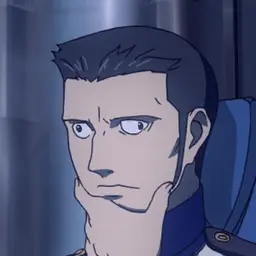Philippa Foot is most known for her invention of the Trolley Problem thought experiment in the 1960s. A lesser known variation of hers is as follows:
Suppose that a judge is faced with rioters demanding that a culprit be found for a certain crime. The rioters are threatening to take bloody revenge on a particular section of the community. The real culprit being unknown, the judge sees himself as able to prevent the bloodshed from the riots only by framing some innocent person and having them executed.
These are the only two options: execute an innocent person for a crime they did not commit, or let people riot in the streets knowing that people will die. If you were the judge, what would you do?


This is even worse logically than the premise of the Trolley problem. You’re basically reframing a terrorist or criminal holding a gun to a bystander’s head and demanding something trying to say it’ll be my fault the person dies if I don’t give them whatever they ask for.
No. It’s got nothing to do with me (or the judge). The criminals threatening violence are the bad people.
The only good “Trolley problem” rewrite I’ve heard is the crying baby and the hiding refugees. https://www.truthorfiction.com/crying-baby-ethics-question-causes-viral-controversy/
All the others are either too contrived (how did those people get in the trolley tracks? why is there no driver? why am I able to get to the lever or how do I know a fat man will detail the trolley?) Or it’s just a terrorist blaming someone else for his actions. The crying baby one challenges me on a very deep level.
I think you’re being a little too quick to judge (no pun intended) by dismissing these scenarips as assigning blame. The point of these problems isn’t to decide whose “fault” it is or who is the “bad guy” - they are thought experiments to explore what is “right” to do, according to various schools of thought.
In the original trolley problem, or in this one, it’s totally fair for you to say “whatever happens, it’s not the chooser’s fault - they were forced into this position, and so they cannot be to blame”. That’s fine - but even if they are absolved of blame the question still remains of what is right for them to do. If your answer is “whatever they want (because engaging with terorrists’ demands is always wrong)”, or “whatever is the opposite of what they’re being pressured to do”, or “whatever is the least action”, or “whatever rminimizess suffering”, or “whatever minimizes undeserved suffering”, those are all still answers to the question, without any implications of blame or guilt to the chooser!
The crying baby and the hiding refugees in M A S H messed me up as a kid.
Don’t you mean chicken?
It was actually a baby. Hawkeye just remembered it as a chicken.
Oh gee, thanks for ruining mash for me. Now I realize it was a dark tragic drama about using humor to cope with the horrors of war and not just some laugh along sitcom. Real great. Can’t believe it.
Some people today say mash was pro war white washing it… Having actually watched mash I couldn’t disagree more. Mash was deeply antiwar, and pro human … but you actually have to watch it to know it
Well, I won’t tell you that it got cancelled. Oh, crap!
Cancelled!? Just great!
Yes I know. I was mirroring Hawkeye’s delusion to avoid the horrific truth.
looks at you compassionately
Objecting to the details of the problems is spectactularly missing the point.
You may as well object to a physics problem on the grounds that the accompanying diagram doesn’t show a real rocketship, just a drawing of one. I mean sure, but that’s not even remotely relevant to the question at hand. The illustration is just a mental aid to let you relate to the problem in a more hands-one manner, nothing more.
By what principles do we determine that benefit to one may outweigh harm to another? What are the factors that must be taken into consideration? Do the principles you name generalise as well as you assume, or are there counter-cases that would evoke a different moral intuition despite being entirely analogous?
It’s easy to come up with neat, elegant statements couched in purely abstract terms, but the entire point of the exercise is to build a predictive model of your emotional response - and you test that by considering actual scenarios.
Trying to kobyashi-maru your way around the scenario doesn’t achieve anything, and just makes it harder to test the thing you were trying to.
The entire point of these problems is that they serve as an intuition pump for what people are morally prepared to do.
If the scenario doesn’t make sense, people will respond to it in unpredictable ways.
In the real world, if I push a fat man in front of a train it won’t slow the train down and save the lives of five people people further down on the tracks, it’ll just kill six people and I’ll be a murderer.
So when we find that people are more uncomfortable with pushing someone under a train vs throwing a switch to make the train hit them, does that mean that they instinctively don’t trust the premise and think maybe that they’ve killed someone for no reason, or that they prefer the extra layer of indirection. We don’t know, and this really reduces the value of the thought experiments.